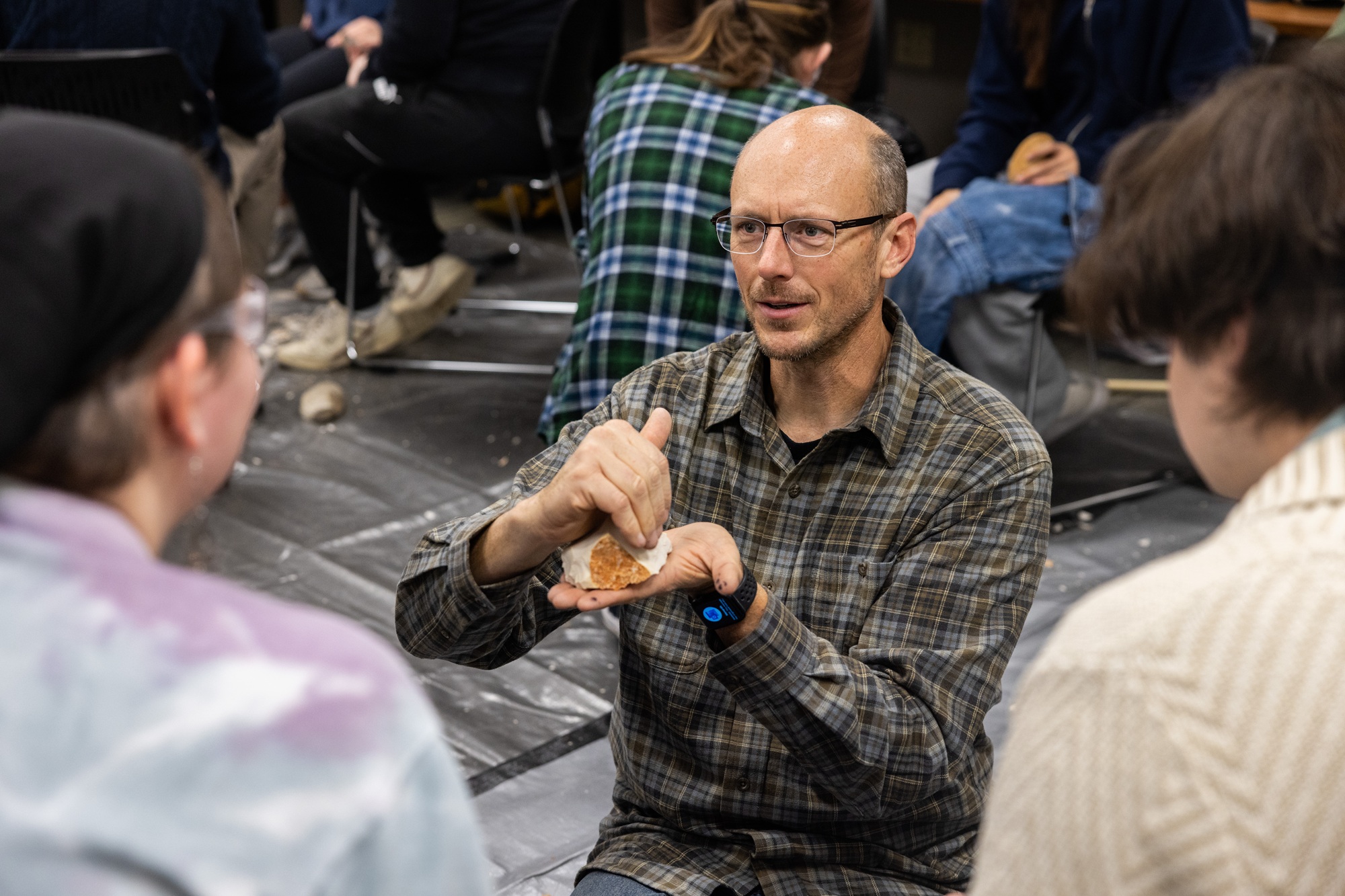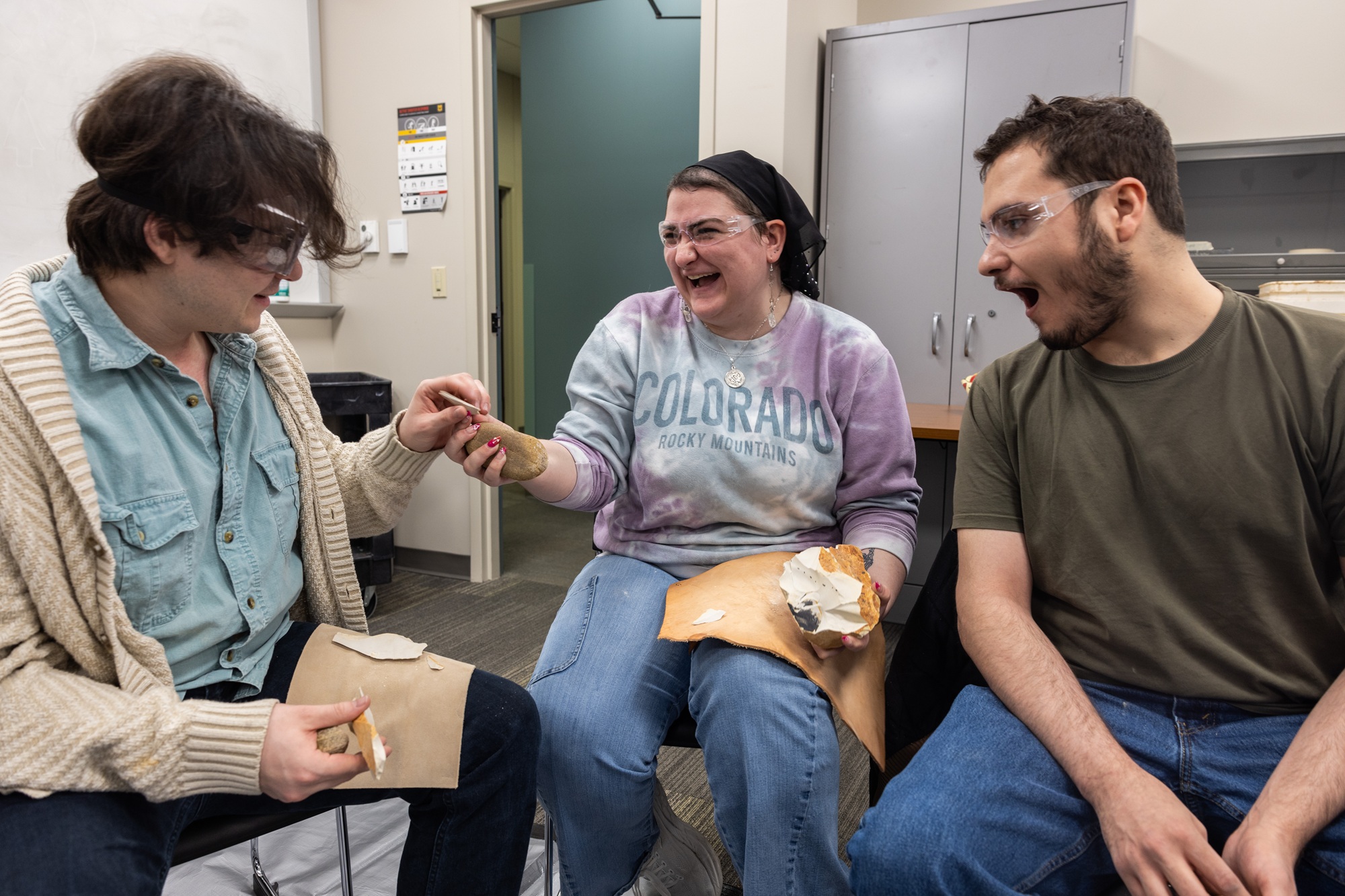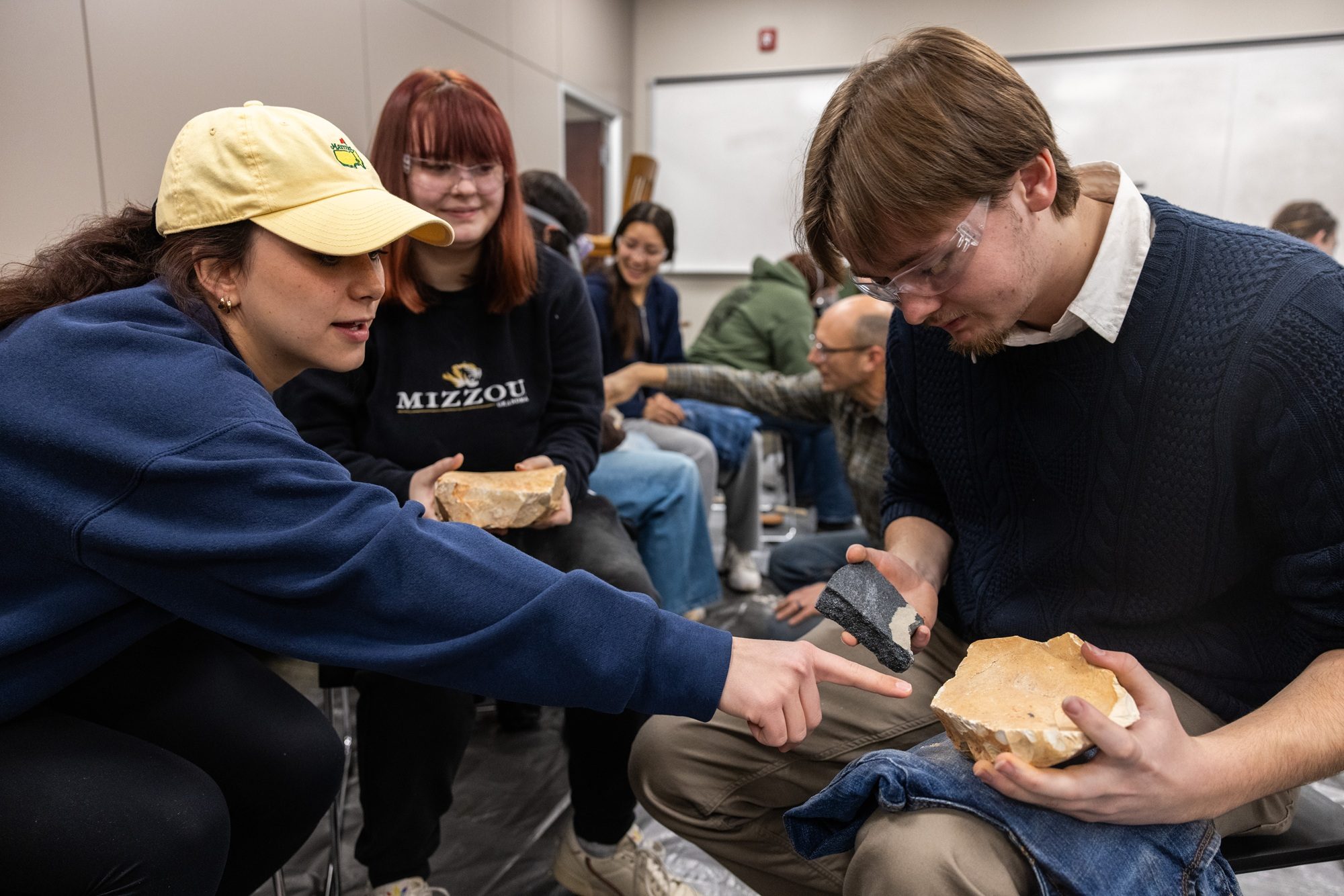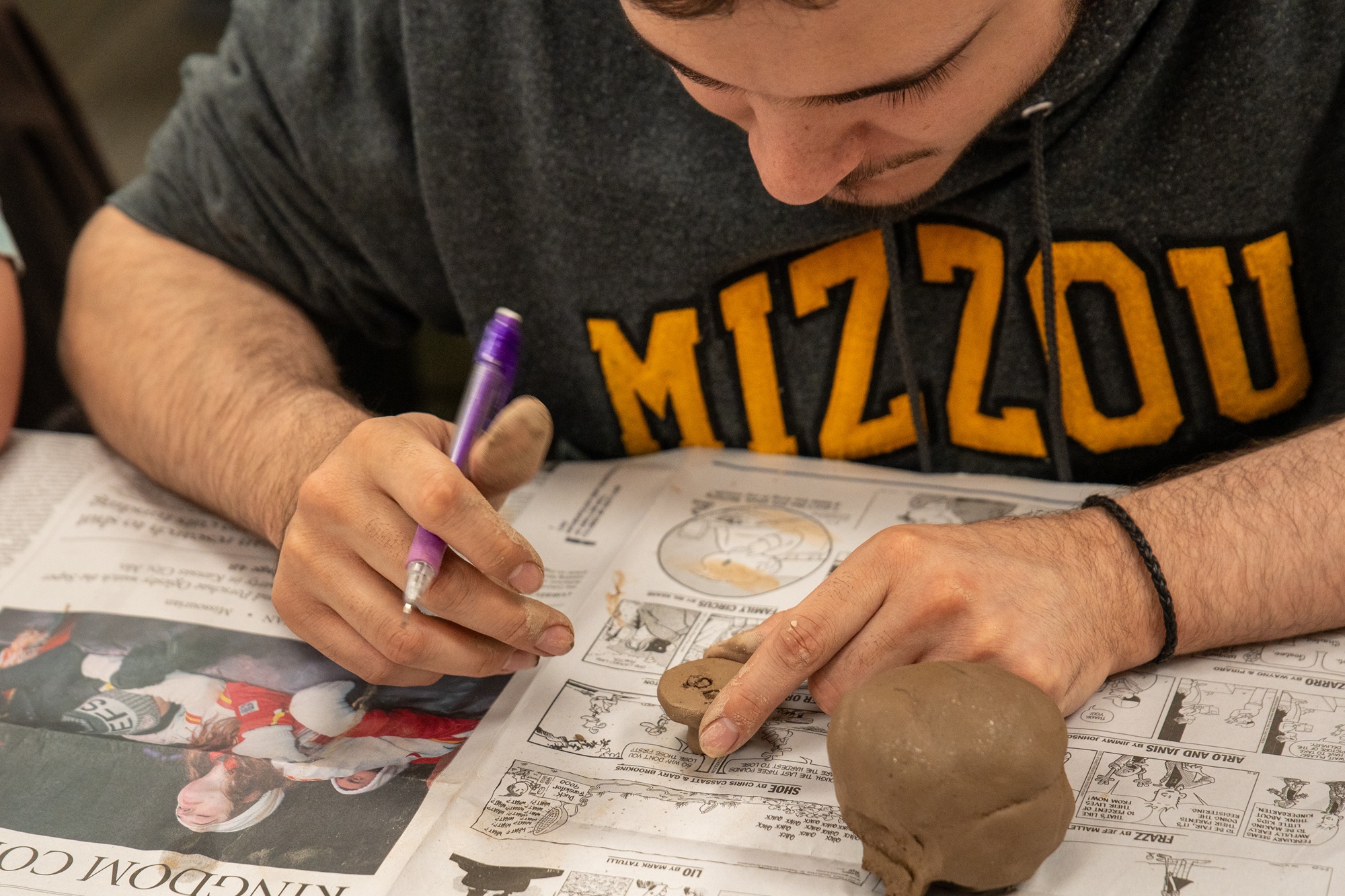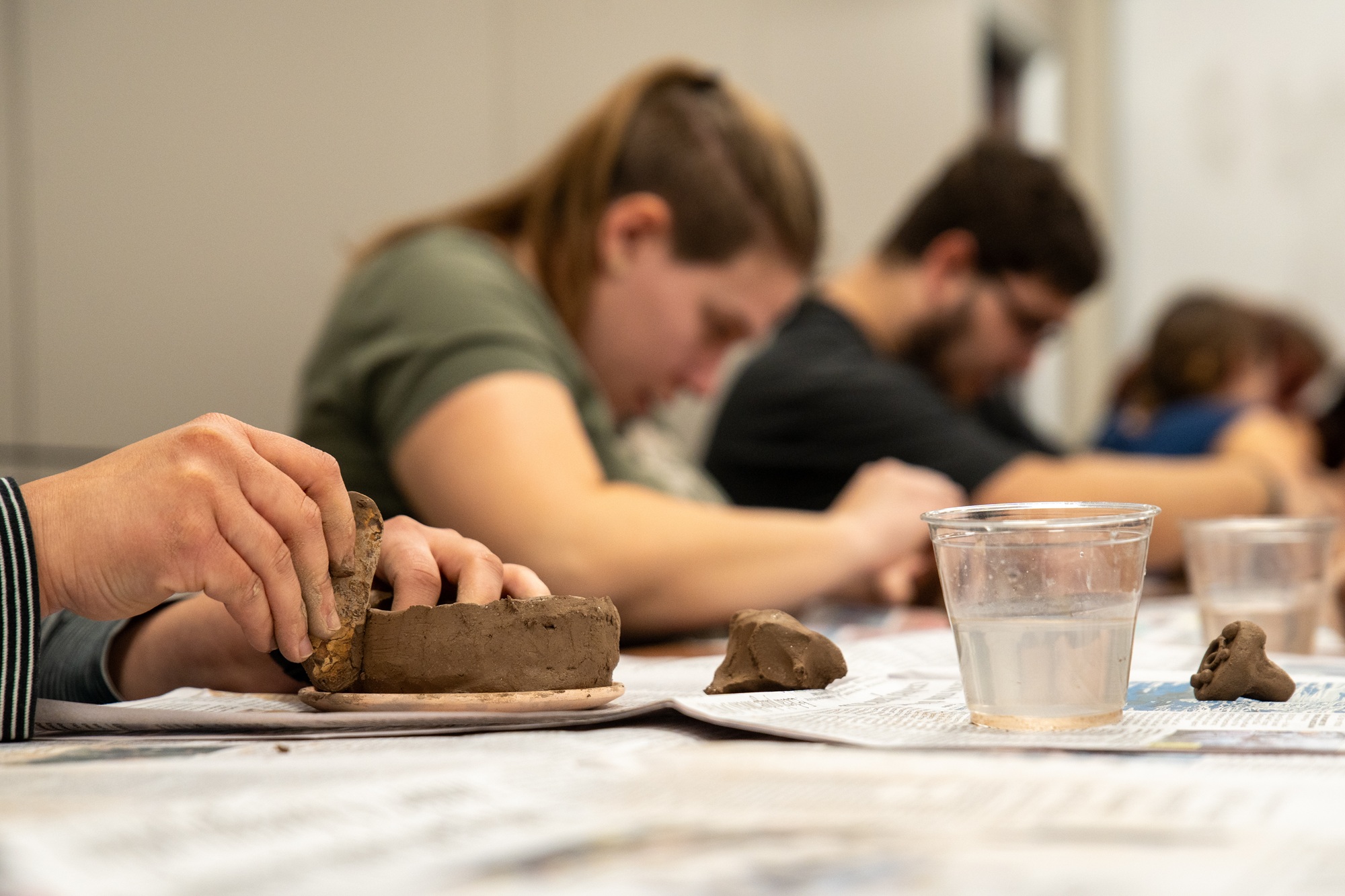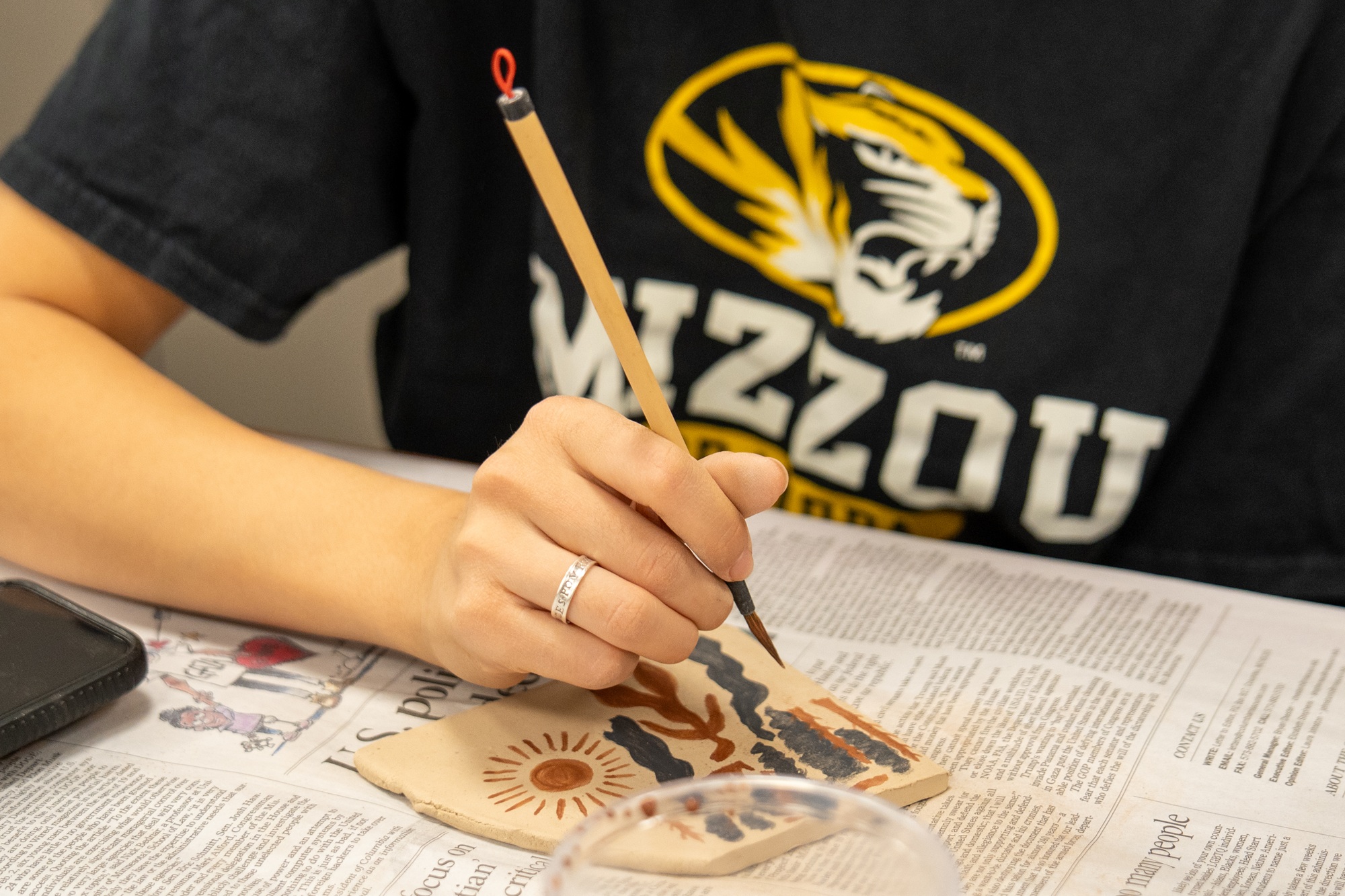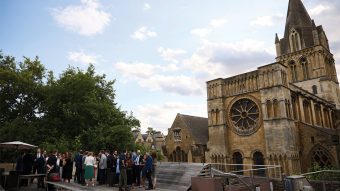By Eric Stann
April 28, 2025
Contact: Eric Stann, StannE@missouri.edu
Photos by Abbie Lankitus and Reagan Manis
CRACK! The sharp snap of stone striking stone echoes across the room — a sound straight out of the Stone Age.
Welcome to the ancient art of flint knapping, where University of Missouri students are discovering just how challenging it is to shape raw material into refined tools without modern technology.
This hands-on experience is at the heart of experimental archaeology, a new course offered through Mizzou’s College of Arts and Science. Co-taught by Emma Buckingham and Jeff Ferguson, the class gives students a rare opportunity to roll up their sleeves and experience the ancient world through their own hands by recreating tools and technologies from thousands of years ago.
Each week, students tackle a mix of classroom learning and practical lab work — everything from crafting stone tools to metal casting. It’s not just about making cool stuff; it’s also about building skills in critical thinking, collaboration and problem-solving — all key competencies for a future career in anthropology, archaeology or museum work.
“Students have to think through multiple variables, adjust their methods and troubleshoot when things don’t go as planned,” Ferguson, an associate professor in the Department of Anthropology, said. “They’re learning how to ask questions, test ideas and draw meaningful conclusions based on real data.”
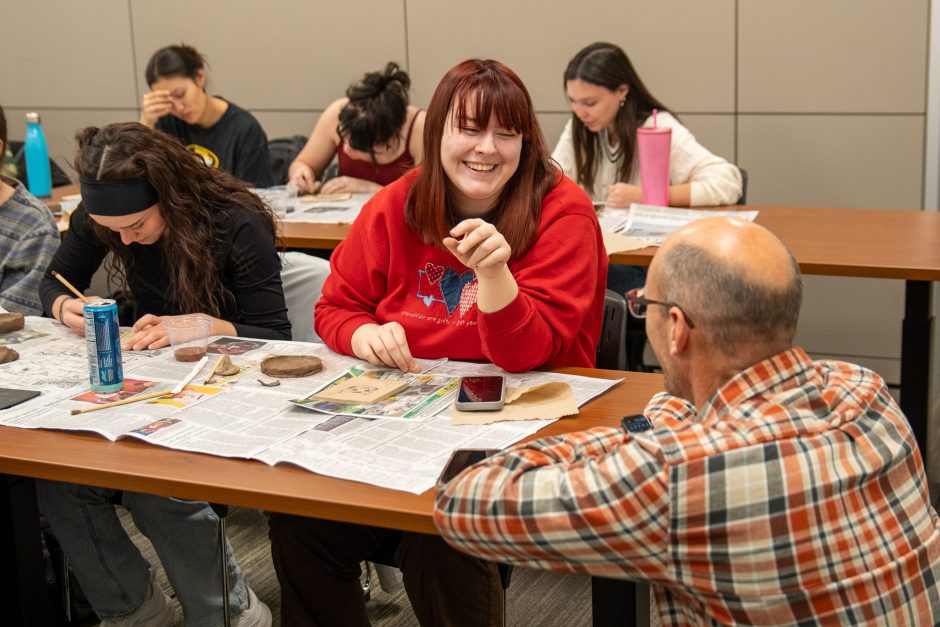
A spark from the past
One of the students putting these skills into practice is Alexis Cornett, a junior double majoring in art history and anthropology with minors in archaeology and ancient mediterranean studies. As a child, she spent hours exploring the creek behind her house, hunting for arrowheads and bits of history. But despite that early curiosity, she never seriously considered archaeology as a career until she got to Mizzou.
Now she knows — being an archeologist rocks.
“I actually started as a business major,” Cornett said. “But once I took a couple of archeology classes, I realized how much I love learning about and connecting with our shared cultural past. This class in experimental archaeology just confirms that I’ve made the right choice.”
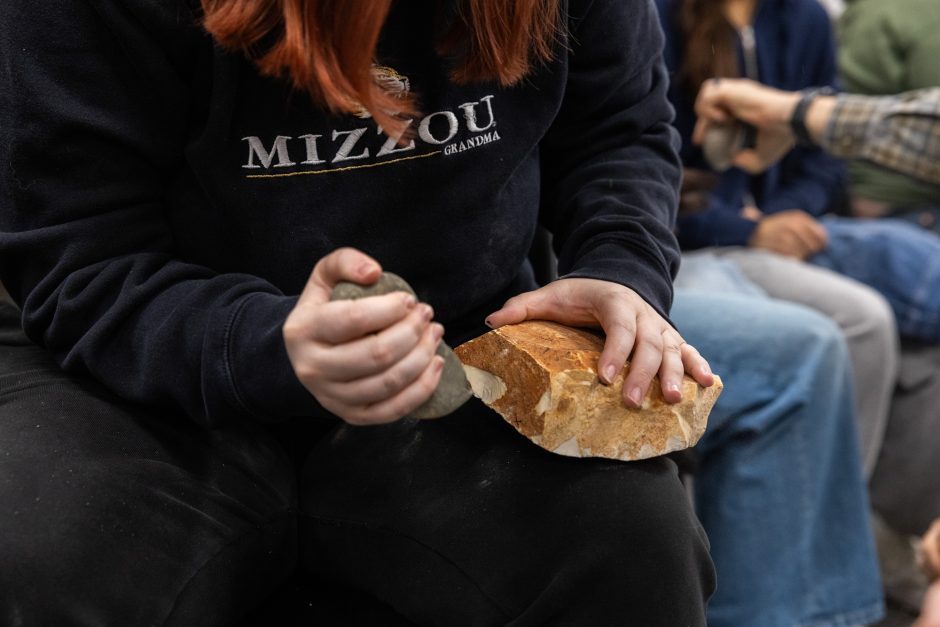
Seeing artifacts through a new lens
Every piece of broken pottery, chipped stone tool or weathered metal holds clues about the people who lived long ago.
“Anyone can look at a sword in a museum,” Cornett said. “But when you’ve made an ancient tool — or at least tried to — you understand and appreciate so much more about how it was used and what it meant to the people who made it.”
Cornett, who hopes to become a museum curator after graduation, said the class has also helped her better understand the cultural background of the archeological materials she helps analyze as a student staff member in the University of Missouri Research Reactor’s Archaeometry Lab.
That deeper connection is exactly what Buckingham, an assistant teaching professor of classical archaeology, and Ferguson hope students take away from the course.
“By recreating tools and studying how they wear down over time, we can figure out how they were used,” Ferguson said. “That kind of insight is valuable not just to archaeologists and museum curators but also to engineers.”
A team effort
More than just artifact-making, the course emphasizes collaboration among peers.
“The field of archeology blends disciplines from biology and chemistry to physics, fine arts and engineering,” Ferguson said. “If you’re studying ancient plant processing, for example, you might need to consult with a botanist. If you’re reconstructing weapons, you might have to work with a physicist.”
That same spirit of teamwork shows up in every lab session. While the class includes official group projects, Cornett said peer collaboration is just part of the everyday experience.
“I really enjoy how collaborative the labs are,” she said. “Everyone’s always willing to help each other out. We learn just as much from our classmates as we do from the instructors.”
Cornett encourages Mizzou students to take a hands-on class such as experimental archaeology.
“This class is such a fun way to actually do what you’re learning about — not just read or hear about it,” she said. “It adds a whole new layer to what we learn about in lectures and really brings it to life.”
